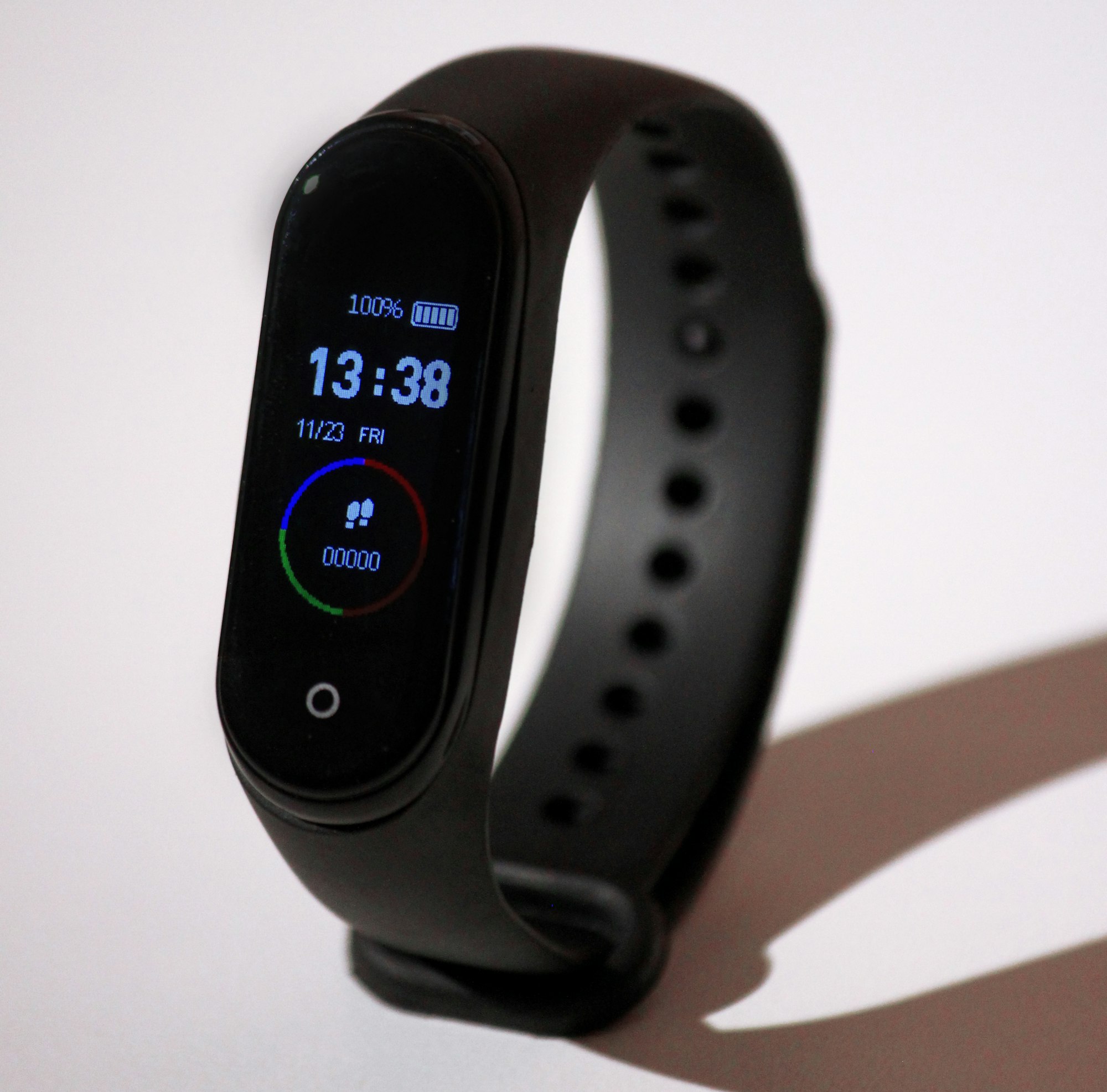TLDR
- Covid-19 pandemic has changed attitudes towards digital healthcare solutions
- There is a wealth of data stored in Electronic health records that could power a myriad of AI medical tools.
- We already see AI tools used for medical diagnostics and preventative care emerging, but social and ethical concerns are major barriers preventing widespread adoption
- Social and ethical factors are slow to change, hence it will take time for us to see prevalent use of AI in healthcare
Introduction
A significant implication of the covid-19 pandemic has been the accelerated adoption of digital tools to support public healthcare services. Not only have we seen the widespread use of online and telephone consultations for general practice, but we have also seen how data has been used to drive decision making in the government's effort to manage the pandemic, from infection modelling to ventilator prioritisation.
Whilst the pandemic has sent shockwaves throughout society, exposing inefficient systems and ineffective methodologies, it has simultaneously provided opportunity and exposure for radical new technologies, both in experimental and systemic capacity. In this article we explore how healthcare data can be further utilised beyond the remit of the pandemic response, when combined with AI and machine learning techniques.
Where does the data come from?
The development of AI models of any kind relies extensively on the data available for consumption (Analytics, training, testing and prediction). In healthcare, potential sources include, but are not limited to:
1) Electronic health records
In modern medicine, the use of electronic healthcare records (ERHs) has quickly become the standard practice across the developed world. ERHs are real-time digital records of a patient’s medical information[5]. ERHs capture a huge amount of information, not just clinical data about a patient’s medical conditions and treatment history. Some examples of data points captured by EHRs include:
- Administrative and billing data
- Patient demographics
- Vital signs
- Medical histories
- Diagnoses
- Immunization dates
- Allergies
- Lab/test/radiology results
- Key info from conversations with medical staff
The variety in the information captured provides a wealth of data that can be leveraged by analytics systems.
2) Internet of Medical things
This refers to internet-enabled (connected) devices which are used in contact with or close to the person of the user. Ranging from general-purpose devices like smartwatches to more specialised devices like glucose monitors,[6] these devices extend the power of cloud data storage, automated monitoring and connectivity to consumers and providers of healthcare services to facilitate innovative remote healthcare solutions based on the data transfer they allow.[7]
3) Genomic data
This refers to the data generated from sequenced DNA. This data is derived from sequencing a part of a person's genome or the whole genome.

Current and Potential uses of AI in the Domain of Public Health
Highlighted below are some of the key use cases for AI in healthcare that can have the largest societal impact. Many of these are already in widespread use in certain areas of medicine, whilst others only exist in trial capacities:
1) Preventative care/ Early detection
Data collected from the internet of medical things (IoMT) can be used to better understand the day-to-day patterns and the healthcare needs of the general population, thus allowing medical professionals to provide better healthcare guidance and feedback to help the general public lead healthier lives. Furthermore, IoMT devices can be used to remotely monitor vital signs such as heart rhythm and blood glucose levels. AI can learn which patterns in the data suggest deteriorating health and alerts both users and medical professionals to take action to avoid potential health crises. This could be highly effective in combating conditions such as heart disease, where AI can use data from smartwatches with heart rate monitors to predict stroke or heart attack likelihood.
For many diseases that present critical life-threatening risk, the market for AI driven healthcare as a preventative measure is self-evident. This includes conditions such as Asthma, Diabetes and Sickle Cell Anemia to name a few. A significant example can be found in the recent development of smart inhalers. These inhalers detect whether patients are receiving the correct dosage of medication and consequently improve application technique and the effectiveness of the medication they currently use[8]
2) Diagnostic assistance
AI-powered software tools can be used to analyse real-time data from patients and predict a diagnosis based on historical data from previous patients. An example of a tool like this is Zebra Medical Vision’s Imagining Analytics Engine. Zebra’s Engine is designed to act as an all in one solution, capable of receiving scans of various types, such as CT scans or X-rays scans, and automatically analysing them to predict the likelihood of over 40 different conditions. The engine has significant application potential in professions such as radiotherapy. By improving the efficiency and experience of medical processes, Zebra hopes to enable medical staff to spend more time on tasks that require human intuition, whilst repetitive tasks can be completed quickly, and often more efficiently, by appropriate AI usage.
Effective usage of AI to assist in medical diagnostics could also facilitate access to care for underserved communities and geographic regions. It is reported that more radiologists are working in the 6 hospitals flanking the renowned Longwood Avenue in Boston than in all of West Africa.[3] Deploying the capabilities of AI-based medical diagnostics tools through an interface such as an App on a smartphone can mitigate the lack of access to qualified medical professionals in these areas. The impacts of emergent technology, particularly in a time of growing global inequality, are often felt by an ever-diminishing market, as the technological gap between nations grows ever larger. By providing previously inaccessible treatment in an intuitive, affordable format, effective AI implementation can directly improve living standards around the world, whilst disseminating technology beyond the silicon valleys that where it is readily accessible.
3) Drug discovery and research
The process of drug discovery and development is often a long and expensive pursuit, due to the experimental nature of drug discovery. AI can simulate interactions between treatment compounds and the human body at a much faster rate than conducting physical experiments. The results from these simulations give suggestions for chemical compounds which are suitable for use as drugs and these can then be further researched. This effectively reduces the cost and time of drug development, potentially leading to increased drug affordability and subsequent universal accessibility.
Barriers to widespread adoption
Despite the potential benefit to be gained from using AI in healthcare, in practice AI features more prominently in Healthcare research and much less in actual day-to-day medical practice than current technological capabilities could accommodate.[1] Whilst the reasons for this are complex, crossing legislative, ethical, and infrastructural boundaries, here are some notable barriers to entry for AI penetration:
1) Lack of Data Infrastructure
Most health care organizations do not have the data infrastructure required to process the vast quantities of data that are needed to implement or even maintain AI systems. Data infrastructure refers to not only the data but also the people, processes, and technology necessary to operate a live and iterating AI system. The alternative of outsourcing this to a third-party provider also raises concerns around the cost of implementation and data privacy, particularly concerning highly-confidential medical records. This leads nicely on to one of the other major adoptive barriers AI in healthcare faces.
2) Privacy Concerns
Healthcare data fall under the category of sensitive data. This refers to data that is uniquely identifiable to a specific individual, which the individual can reasonably expect to be secure from public access, stored confidentially, and processed only with their consent. To truly leverage the full power of AI would mean to have access to as much data from as wide a pool of population as possible. This would give researchers and public health administrators access to a richer source of data for building AI algorithms. However, not everyone may want to comprise the privacy of their personal healthcare records for research. And understandably so, should this data get into the hand of malicious actors there are significant risks posed to both the individual and the general public.
3) Human Distrust
There are a few facets to this particular barrier.
- Patients prefer to receive care from humans than from purely digital systems.
Humans are social creatures, and there is a desire to interact with other humans, especially when it comes to non-trivial things such as taking advice on our health. Despite the potential for improved efficiency, perhaps even accuracy of recommendation, studies have shown many still want a human to talk us through our options and most critically empathize with us.[9] One could say that health is a science but administering care is an art.
- Lack of trust from the medical professionals
Sometimes the medical professionals interacting with AI systems also do not fully feel at ease to trust the predictions from these systems. Many medical professionals have developed their expertise through numerous years of experience. Most are not technologists and may not have the same appreciation for the competence of an AI system as they do for their own skill. Even those who do appreciate this are also likely to recognise that medicine is not a field of absolutes[9] and the technology will also not be right at some point.
The lack of accountability and transparency in AI decision-making has raised similar concerns. For example, should a medical professional offer an incorrect diagnosis, the logic and thought process is easily traceable, whilst they adopt accountability (although likely immunity depending on the specific healthcare system) should the diagnosis be proven incorrect. Some AI systems like deep neural networks are not fully interpretable, meaning that the process for how they reach a certain conclusion is not always transparent. Different systems may also reach slightly differing conclusions when provided with the same data and information. This is a significant ethical question around the use of AI which extends beyond healthcare.
Writer’s thoughts: What could we realistically expect to see in the future?
It is clear that AI has the potential to play a huge role in the way in which the average person receives healthcare. However, even beyond developing the technology to the level required for deployment, there are still ethical and social limitations holding AI back from widespread use in Healthcare. For example, the advent of the global pandemic has changed attitudes towards digital healthcare, however, I believe that this a largely temporary effect, and most people will still prefer to receive their healthcare from other humans whenever that is possible, especially for serious health conditions. NHS data reports are already suggesting that, where possible, people are once again returning to face-to-face treatment schedules.
On the contrary, for minor healthcare concerns, the widespread adoption of digital platforms through healthcare providers is likely to continue. This offers a viable market for the adoption of AI, particularly in non-life threatening or simple diagnostic measures.
One field in which I believe we are likely to see significant immediate opportunity for AI healthcare is in the market for preventive care. 4.8 million people suffer from diabetes in the UK and there is currently no simple and consistent way to constantly monitor blood sugar level. Uniquely amongst the AI healthcare market, this is a sector in which technology is proving to be the biggest limiting factor. Having access to this sort of data may assist treatment schedules, and may even stop early-onset development, raising awareness on unique dietary adjustments in real time.
There is also huge potential for AI to impact the lives of people in developing countries where the main issue is a lack of qualified health care professionals. In such a situation people are more likely to trust in the healthcare they receive from AI-enabled tools due to the lack of access to decent alternatives. Furthermore, healthcare in developing nations is also less tightly regulated than in developed countries. However, in the near term, we are unlikely to see any dramatic progress on this front due to the infrastructure challenges.
Overall I believe we can expect to see accelerated progress in the widespread adoption of AI in the day-to-day healthcare of the everyday person for minor health concerns however, for more serious health concerns, widespread adoption is still constrained by factors such as regulation and trust and technologically limited by the lack of interpretability and poor access to data and digital Infrastructure. Such sociological or infrastructural concerns are slow-shifting landscapes. It seems the fate of AI in healthcare, as in many industries, is to lag behind the rate of development and innovation. However, in an industry as significant to our society as healthcare, we should always look to follow best practice. Many were frustrated with the rate of vaccine development around the world, particularly the multi-stage trials that many suppliers were required to undergo. However, these checks and balances exist for a reason. When it comes to the health of a nation, sometimes less is more.
References
[2] https://www.pwc.com/gx/en/industries/healthcare/publications/ai-robotics-new-health/transforming-healthcare.html#:~:text=Beyond
[3] https://healthitanalytics.com/news/top-12-ways-artificial-intelligence-will-impact-healthcare
[4] https://www.zebra-med.com/
[5] https://www.healthit.gov/faq/what-electronic-health-record-ehr
[6] https://ordr.net/article/iot-healthcare-examples/
[8] https://www.news-medical.net/health/What-are-Smart-Inhalers.aspx
[9] https://techcrunch.com/2017/01/15/technology-cant-replace-the-human-touch/

